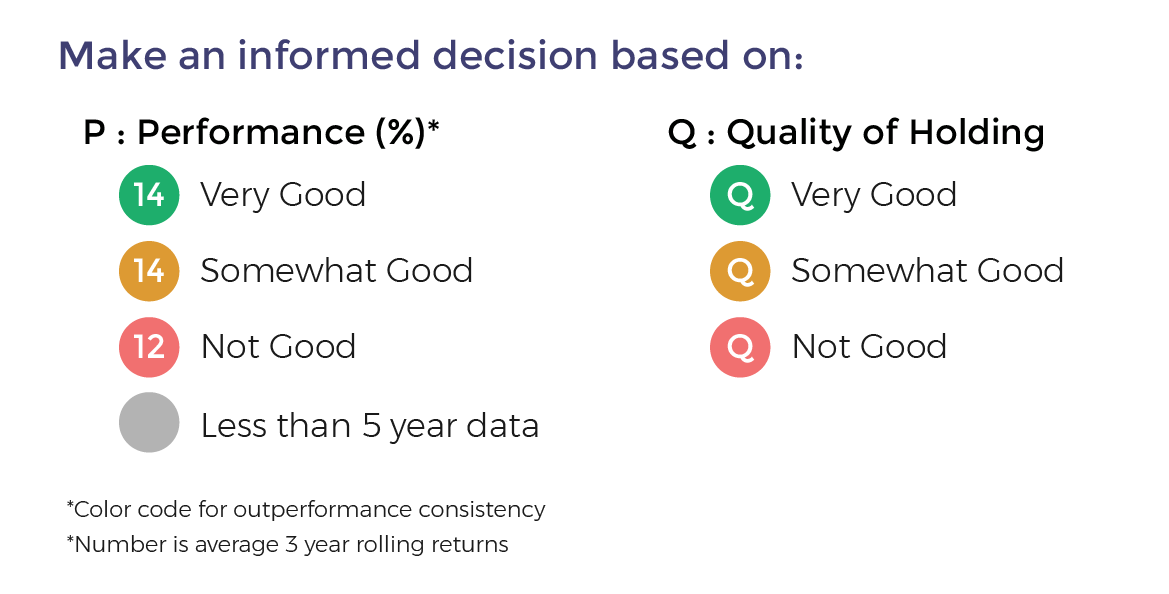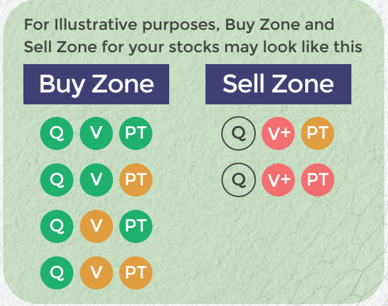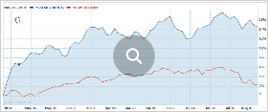Cello World
- Cello World is coming out with a 100% book building; initial public offering (IPO) of 2,20,61,947 shares of Rs 5 each in a price band Rs 617-648 per equity share.
- Not more than 50% of the issue will be allocated to Qualified Institutional Buyers (QIBs), including 5% to the mutual funds. Further, not less than 15% of the issue will be available for the non-institutional bidders and the remaining 35% for the retail investors.
- The issue will open for subscription on October 30, 2023 and will close on November 1, 2023.
- The shares will be listed on BSE as well as NSE.
- The face value of the share is Rs 5 and is priced 123.40 times of its face value on the lower side and 129.60 times on the higher side.
- Book running lead managers to the issue are Kotak Mahindra Capital Company, ICICI Securities, IIFL Securities, JM Financial and Motilal Oswal Investment Advisors.
- Compliance Officer for the issue is Hemangi Trivedi.
Profile of the company
While the company was incorporated only in 2018, its erstwhile promoter Late Ghisulal Dhanraj Rathod, father of two of its Promoters, Pradeep Ghisulal Rathod and Pankaj Ghisulal Rathod, was associated with Cello Plastic Industrial Works (CPIW) and the ‘Cello’ brand since 1962. Its Promoters (through their family) have since diversified its product range and brand portfolio over the last six decades. The six decades of experience of its Promoters (through their family) in the consumer products industry has enabled it to better understand the preferences and needs of consumers in India, diversify its product portfolio and grow its multi-channel distribution network. This has enabled it to curate an extensive product portfolio that caters to a diverse range of consumer requirements, and offers a broad range of contemporary products across different ranges, types of material and price point.
The company owns/leases and operates 13 manufacturing facilities across five locations in India, as of June 30, 2023, and it is currently establishing a glassware manufacturing facility in Rajasthan. Its manufacturing capabilities allow it to manufacture a diverse range of products in-house. Its revenue derived from its in-house manufacturing operations aggregated to 78.65%, 82.63%, 79.37%, 82.08% and 79.67% of its total revenue from operations for the Financial Years 2021, 2022 and 2023 and the three months ended June 30, 2022 and June 30, 2023, respectively. The remaining products (consisting mainly of steel and glassware products) are manufactured by third party contract manufacturers who manufacture these products with its branding pursuant to arrangements with it. The scale at which the company manufactures its products, combined with its supply chain management enables it to derive the benefits of economies of scale across various aspects of its business model. Further, it maintains optimal inventory levels across its manufacturing facilities by implementing technology and utilising available market information. It also endeavors to maintain high quality standards and good manufacturing practices. It has a strong pan-India distribution network. From the distribution network established by CPIW for its thermoware household articles and plastic materials business, its Promoters.
Proceed is being used for:
- Achieving the benefits of listing the Equity Shares on the Stock Exchanges.
- Carry out the Offer for Sale.
Industry Overview
The Indian Consumerware Market is broadly divided into two categories, Consumer Houseware and Consumer Glassware. The Consumer Houseware and Consumer Glassware markets are further segmented into various subcategories like: Consumer Houseware: Hydration, Cookware, Insulated Ware, Lunchboxes, Storage Containers, Melamine, Small Kitchen Appliances and Cleaning Products. Consumer Glassware: Opalware, Glassware and Porcelain. This market was valued at Rs 348 Billion in FY 2022. This market has witnessed steady growth over the years with market size increasing from Rs 305 Billion in FY 2020 to Rs 348 Billion FY 2022 growing at a CAGR of 6.9% and Rs 565 Billion in FY 2027 growing at a CAGR of 10.2% for the period FY 2022-2027. Various factors like increasing disposable income, nuclearization of families, and growing demand for organized and functional kitchen spaces are further adding to the growth of the Indian Consumerware Market. This growth is attributed to factors like favourable demographics with shifting dynamics in kitchen responsibilities and an increase in working women, increasing ownership of products per person and the evolving Indian consumer, with increased discretionary spending and improved product availability through online platforms and multi-brand outlets.
The Indian Consumerware market has witnessed a significant transformation in its channel segmentation over the years. In FY 2015, the general trade held a dominant position, accounting for a substantial market share of 96.5%. However, as the market evolved, there has been a gradual decline in the general trade's contribution, but nevertheless, it remains the dominant channel for this category. The emergence of e-commerce has also played a pivotal role in shaping Consumerware market's channel segmentation. In FY 2015, e-commerce held a relatively small share of 2%. However, as consumers increasingly embraced online shopping, the e-commerce sector experienced rapid growth, capturing a share of 9% by FY 2022. This growth is likely to continue, with a projected share of 12% by FY 2027, driven by factors such as convenience, wider product selection, competitive pricing, and the increasing penetration of internet connectivity in India.
Pros and strengths
Well-established brand name and strong market positions: The company’s strong market positions in the consumer products industry segment are a reflection of its vast experience, continuous product development and consumer understanding. Its brand ‘Cello’ was awarded as one of the most trusted brands of India in 2021 by Commerzify. It is a prominent player in the consumerware market in India with products in the consumer houseware, writing instruments and stationery, and moulded furniture and allied products categories. While the company was incorporated only in 2018, its erstwhile promoter Late Ghisulal Dhanraj Rathod, father of its Promoters, Pradeep Ghisulal Rathod and Pankaj Ghisulal Rathod, was associated with Cello Plastic Industrial Works and the ‘Cello’ brand since 1962. Further, it launched the writing instruments and stationery business in 2019 under the ‘Unomax’ brand. It had the highest EBITDA margin for the Financial Years 2021, 2022 and 2023. To enhance brand awareness and strengthen brand recall for the brands and sub-brands that it use, it utilizes a diverse array of promotional and marketing efforts, including in-shop displays, merchandising, advertisements in print and social media, retail branding and product branding.
Diversified product portfolio across price points catering to diverse consumer requirements: The company focus on identifying the needs and preferences of its consumers through its network of distributors, and innovating its products to cater to their differing requirements and preferences, while endeavouring that its products are available across various price points and meet quality standards expected by its consumers. As of June 30, 2023, it offered 15,891 SKUs across its product categories. It offers an extensive product range across its three product categories. It has a diverse range of products across different product categories, types of material and price points, which enables it to serve as a ‘one-stop-shop’, with consumers across all income levels purchasing its products. Its wide spectrum of product offerings cater to a wide range of consumer needs. It has demonstrated the ability to expand its SKUs and products across various price points. Its diversified product portfolio has also allowed it to maintain stable profit margins over the years by enabling it to withstand fluctuations in raw material prices.
Pan-India distribution network with a presence across multiple channels: The company’s pan-India distribution network is one of the key reasons behind its efficient launch of new range of products in the past. Its nationwide sales and distribution network is supported by its 721 member sales team, as of June 30, 2023. It equip its field staff across its distribution network with an enterprise resource planning system, which assists it in forecasting production levels and helps it in optimizing inventory levels. It has developed and maintains longstanding relationships with its distributors, and retailers over the years. It regularly interact with its distributors and retailers for insight into consumer preferences and market feedback, which in turn helps it to, among others, (i) check for product-market fit at an early stage before scaling them up, and (ii) structure appropriate pricing discounts and advertisement campaigns during festive seasons. Its products also reach consumers through modern trade and export channels, e-commerce marketplaces and its own websites. It has an established export channel for its stationery business. In addition, it also sells its products in bulk quantities to corporate clients and government departments.
Ability to manufacture a diverse range of products and maintain optimal inventory levels: The company’s manufacturing capabilities allow it to manufacture a diverse range of products in-house, which in turn enables it to scale up production quickly to meet increased demand, reduce time taken to launch new products in the market, maintain quality control of its products, maintain better control over its supply chain and mitigate risk of supply chain disruption. Its revenue derived from its in-house manufacturing operations aggregated to 78.65%, 82.63%, 79.37%, 82.08% and 79.67% of its total revenue from operations for the Financial Years 2021, 2022 and 2023, and the three months ended June 30, 2022 and June 30, 2023, respectively. The remaining products (consisting mainly of steel and glassware products) are manufactured by third party contract manufacturers who manufacture products with its branding pursuant to arrangements with it. The company own and operate 13 manufacturing facilities across five locations, with an installed annual capacity of 57.77 million units of consumer houseware products per annum, 15,000 tonnes of opalware and glassware per annum, 705.00 million units of writing instruments and stationery products per annum and 12.80 million units of moulded furniture and allied products, as of June 30, 2023.
Risks and concerns
Dependent on distribution network in India and overseas: The company is dependent on its distribution network in India and overseas to sell and distribute its products to consumers. For sales and distribution in India, it has a multi-tiered network comprising, among others, distributors and retailers. If it is unable to maintain and grow its distribution network, its products may not effectively reach consumers and it may lose market share. Any disruptions, delays or inefficiencies by, among others, its superstockists, distributors and retailers could adversely affect its operations and may lead to disruptions in its supply chain. While it enters into agreements with its distributors/ super-stockists in the ordinary course of business, there can be no assurance that its products will continue to have the same geographical outreach in the future. It also faces the risk of attrition of its network of distributors and super-stockists, especially if its reputation with its distributors and super-stockists is tarnished. Further, most of its distributors and superstockists do not provide their service exclusively to it and may be providing the same or similar service to other parties, including its competitors.
Reliance on third-party contract manufacturers: The company sources certain products such as steel and glassware products from third-party contract manufacturers primarily located in China. While it has not faced any material past instances where political tensions affected its contracts and arrangements with third-party contract manufacturers, any of these events could delay the successful and timely delivery of products that meet its quality standards and other requirements. While it has maintained stable relationships with its third-party manufacturers in the past, it cannot assure that, if it is unable to source adequate quantities of such products in a timely manner from its existing suppliers in the future, it will be able to find alternative manufacturers at acceptable prices and quality levels or at all. Its dependence on third party manufacturers could adversely affect its business, results of operations, financial condition and cash flows as a result of occurrence of factors mentioned or violation of terms of engagement by such contract manufacturers.
Business subject to seasonality: The company’s business is subject to seasonality as it sees higher demand of its products from its customers during the festive seasons. Further, its products also face varied demand based on weather conditions across the seasonal cycles. Accordingly, its results of operations and financial condition in one quarter may not accurately reflect the trends for the entire financial year and may not be comparable with its results of operations and financial condition for other quarters. Additionally, any significant event such as unforeseen economic slowdown, political instabilities or epidemics during these peak seasons may adversely affect its business and results of operations.
Face significant competition: The company faces significant competition from a number of competitors, some of which are larger and have substantially greater resources than it, including the ability to spend more on advertising and marketing and offer substantial discount. Some of its competitors also have competitive advantages such as longer operating histories, better brand recognition, greater financial resources, more advanced technology, better research and development capabilities, greater market penetration, larger distribution networks, larger spending budgets on advertisements and promotions, and more established supply relationships. Increased competition from existing players and new entrants, in each of the products segments it operate may cause it to lose customers, fail to attract new customers and result in an overall reduction in its market share. In the overseas market, it competes with large players having strong local presence and it may not be able to expand its business in the overseas market. It also faces competition from non-branded local retailers and traders that may have more flexibility in responding to changing business and economic conditions than it.
Outlook
Cello World is a famous Indian consumer product company mainly dealing in three categories such as writing instruments and stationery, molded furniture, consumer housewares and related products. The company has an experience of more than 60 years in the field of consumer product industry which enables them to better understand consumer preferences and choices. Cello World has 13 manufacturing units situated in 5 different locations in India. The company also aims to set up a glass manufacturing unit in Rajasthan with European made machinery to enable efficient productivity and enhanced manufacturing capacity. It has developed and maintains longstanding relationships with its distributors and retailers over the years. Further, its products also reach consumers through modern trade and export channels, e-commerce marketplaces and its own websites. In addition, it also sells its products in bulk quantities to corporate clients and government departments. On the concern side, the company faces pressures from various forms of unfair trade practices, such as the sale of counterfeit, cloned, lookalike and pass-off products. Counterfeit and cloned products are products manufactured and sold illegally as its products, whereas lookalike products are manufactured and packaged to resemble its products.
The issue has been offered in a price band of Rs 617-648 per equity share. The aggregate size of the offer is Rs 1361.22 crore to Rs 1429.61 crore based on lower and upper price band respectively. On the financial front, total income increased by 31.88% to Rs 18,134.35 million in Financial Year 2023 from Rs 13,751.09 million in Financial Year 2022, primarily due to an increase in revenue from operations. The company has reported a restated profit after tax of Rs 2,850.66 million for Financial Year 2023 as compared to a restated profit after tax of Rs 2,195.23 million for Financial Year 2022. Meanwhile, the company intends to utilise its innovation capabilities to expand its existing product portfolio and develop new range of products across its product categories. In particular, it aims to expand its product portfolio in its consumer houseware product category, by focusing on introducing new range of products in the kitchenware, porcelain, appliances, cookware, glassware, writing instruments, and stationery spaces. The company intends to grow its manufacturing capabilities so that it is able to quickly and effectively respond to increases in market demand for its products, in order to continue to grow its business.































